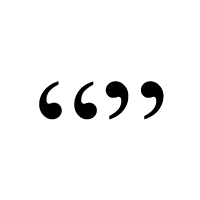Guillemet
Guillemets [ gijmɛ ] (singular guillemet ) are special quotes, which are represented by two angle brackets. This form of quotation marks is in French and the other Romance languages, the normal form of quotation dar. When used in the German guillemets are also referred to as a reversed French quotation marks, as chevrons or as Möwchen, next to colloquially as quotation marks. In the Swiss High German, the guillemets are used as normal quotes.
Use
It should be noted that the quotation marks are used in the Romance languages, with the tip pointing " outside ", in German but the other way round with the point "inside". An exception is Switzerland, where the usual in the Romance languages form is also used in German. In France also, the guillemets with "space" set before and after the text above.
As with the "normal" used in German quotation marks there at the Guillemets also a simple form. An advantage of the simple form of the French quotation marks is that they are not with the comma ( opening quote ) or the apostrophe ( closing quotation mark ) can be confused. The simple guillemets have to be distinguished from the mathematical sign for greater than (> ) and less than (< ).
History
Guillemets were already 1527 used to quote mark. The French name was also found for the first time in 1677 in the Considérations en faveur de la langue Francoise ( German: considerations for the French language ) by Michel de Marolles. This refers ( not to be confused with the earlier namesake Guillaume Le Bé I ), the (supposedly took place in 1622 ) introducing the quotation mark has been falsely attributed to Guillaume II Le Bé. Guillemet is a diminutive for the name Guillaume (German: Wilhelm ).
HTML entities
In HTML, the rightward quotes " with " be coded, the leftward quotes " with " ( right or left angle quote ). The simple variants corresponding> with > and < with < ( right / left single angle quote ) coded.







